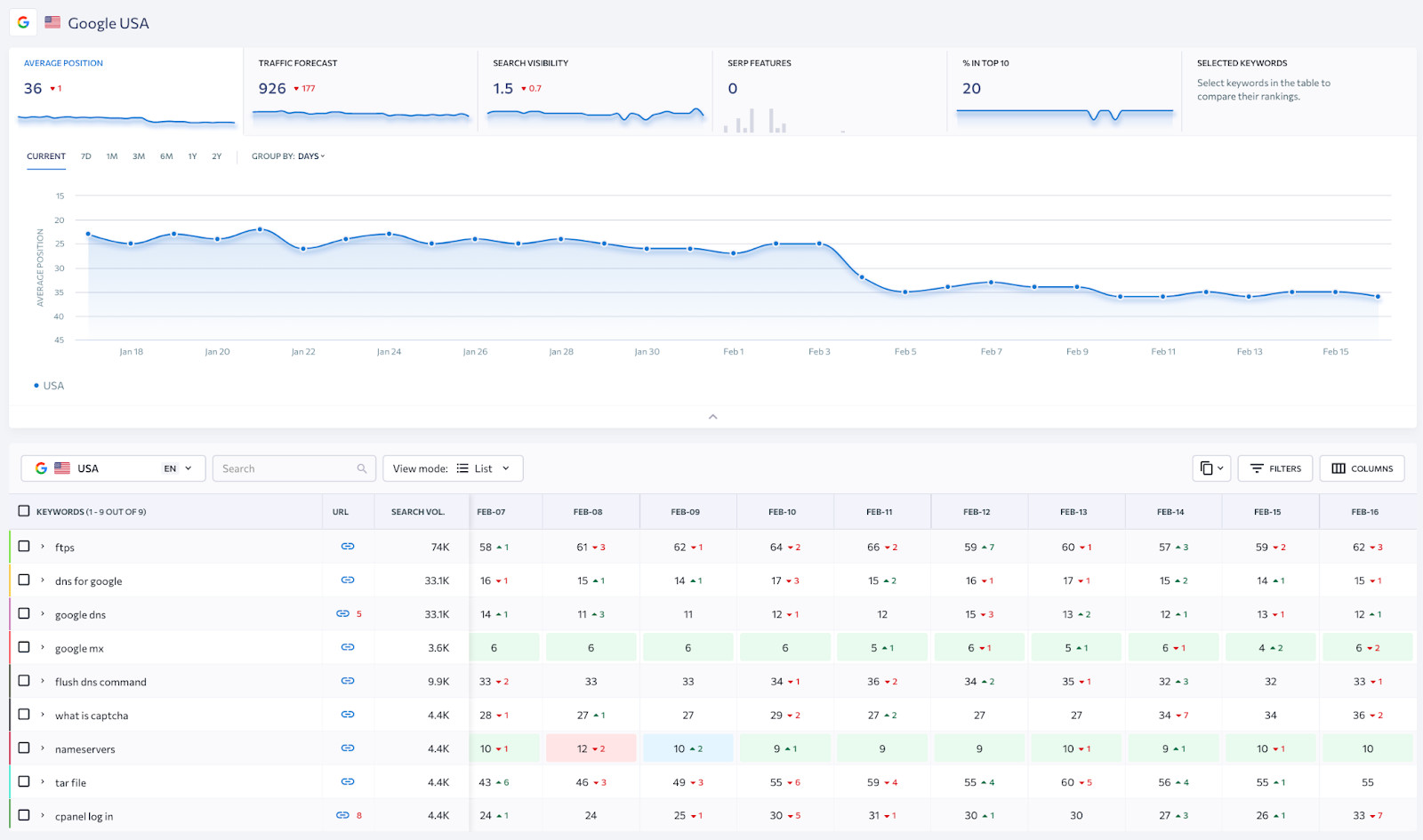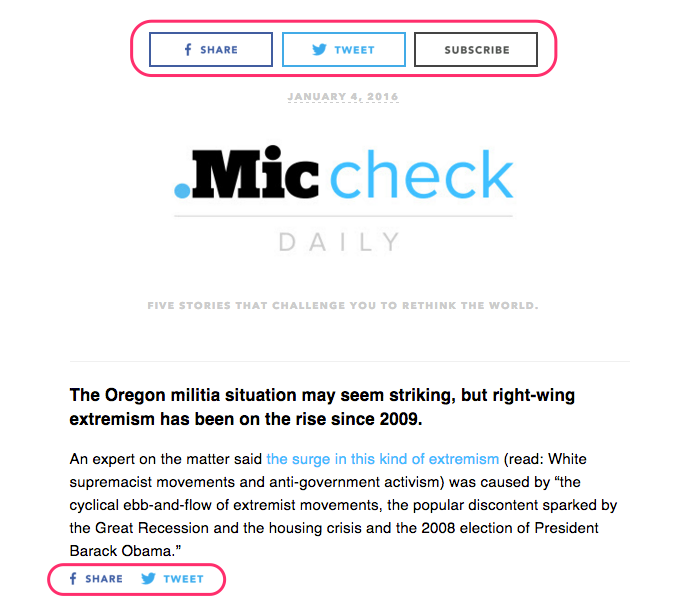Search engine optimization, or SEO, is crucial for the online visibility of any website and vital for billions of companies worldwide that want to promote their businesses online. SEO is becoming increasingly popular for those wanting to rank higher in search engine results pages. Additionally, organic traffic as an aim of digital marketing has gained popularity in recent years. One of the most well-established methods of digital promotion is email marketing. But how to use SEO techniques to boost the efficacy of this technique?

We have seven effective ways for you to boost lead generation, conversions, and visibility for your campaign.
Generate Traffic to Improve Ranking
There’s much debate about whether direct traffic is a ranking factor. On the one hand, most Google officials like John Mueller say it doesn’t matter. On the other hand, Google’s content guidelines state quite clearly that creating a buzz around new content, whether through email or social media, helps “build your site's reputation with both users and Google.”
On top of that, Google is proven to take a close look at your website’s engagement statistics. While things like bounce rate, dwell time on the website, or click depth may not be the ultimate hack to get any web page to page one of Google, they definitely help. Click depth, for instance, is confirmed to be a ranking factor. So, how can we use this to help our SEO efforts with email marketing?
The odds are that a part of your subscriber list is interested in receiving tips you share on your blog. If you’re not yet sending these subscribers links to your blog posts, you should consider doing so after asking for permission.
Your email list subscribers are already interested in your company's offerings and may be interested in reading the content. This means they’ll be more willing to spend time on the website, clicking through it, scrolling down the page, and visiting more blog or product pages. All these activities signal to Google that your new page interests viewers, which serves as a minor ranking signal.
To evaluate the effectiveness of this strategy, there are several steps you can take. Firstly, you can employ an SEO tool such as SE Ranking’s Rank Tracker or Zutrix's Rank Tracker to monitor the positions of your website for numerous keywords. Another option is SE Ranking's tool, which enables you to track the keywords for which your site ranks in a specific location and provides insights into the dynamics of each query. Utilizing these tools can gain valuable insights into your website's keywords and pages that drive organic traffic. Additionally, you can observe whether these keywords and pages experience growth or decline, allowing you to gauge the impact of your SEO efforts and determine whether they yield the desired results.

Source: SE Ranking
The direct traffic that your newsletter generates can also serve as a way to judge the quality of the page. It will likely be the first traffic it receives, as it often takes time for a new page to rank in SERP. Examining user interaction with new pages and seeing if they are scrolled to the bottom or not can show whether they’re interesting to read. If they’re not being read fully, it may mean you need to make the article more interesting. This will also influence the ranking since Google aims to display the best content on top of SERP.
Grow Subscriber List with Engaging Content
Your existing email marketing efforts may improve the SEO of specific pages and the whole website. But the opposite can also be true — search-optimized content can be a point of discovery that grows the subscriber list.
According to Litmus, every dollar spent on email marketing accounts for $36 ROI. This makes email marketing a must-have in your arsenal of marketing tools. But to do it correctly, you need to grow your subscriber list and send the newsletter to more people. Since your main product and category pages may be harder to optimize and get into the first page of Google, you can focus on creating blog pages that educate potential customers on topics close to your product. Create interesting, engaging content and optimize the pages for SERP.
Thus, there is a chance to boost organic traffic to the page and build your email list. Besides, when users are on a well-optimized page that has user intent in mind, they are more likely to convert in general and not just convert to becoming a subscriber.
When creating the content, focus on finding a keyword, researching the topic, and covering it better than the articles that are already in the SERP. Here’s how you do that:
- Give users better answers to their key questions
- Cover more related topics in the subheadings
- Create a more in-depth guide on the topic
- Give more unique tips that stand out
- Write about your unique experiences
Doing this ensures the page answers the search intent and is more likely to rank high. However, there are a few dozen purely technical optimization tasks you have to do as well to help the page rank.
Start by running a page or a website audit. One of the best tools for that is the SE Ranking On-Page Checker. Enter your URL and a targeted keyword, and get a detailed report of your on-page optimization compared to your main organic competitors in just a few minutes. The software compares your page to the average top 3-10 results in search and advises you on what and how to improve. It’s a good practice to run this check each time a page has been edited. Once the page is well-optimized and brings in traffic, you should find a way to convert visitors into subscribers. Try different variations of subscription forms: pop-ups, forms on the right side of the blog page, or a form on the bottom of the page like this.

Source: DeBounce.io
Test different variations of forms — try to change the copy or highlight the form differently. See what brings the most subscribers and stick with it.
Repurpose Content to Serve Subscribers
Both SEO and email marketing include a lot of content marketing. Email marketing tends to be centered on delivering content, either by sharing blog posts or delivering a unique newsletter. While it includes many technical tasks, SEO is often centered on creating informative content that receives traffic.
The problem with large-scale content creation is that sometimes, you can run out of ideas. When this happens, you can supplement your content efforts in both email marketing and SEO by repurposing content. Your blog posts are likely oriented towards a keyword or a couple of keywords your potential customers are searching for. If the pages rank well, your customers are interested in reading about that particular topic.
Since a newsletter typically includes industry tips that can help your subscribers, it’s a good idea to take a well-performing blog post and turn it into a couple of short newsletter tips. The same can be done with a well-performing newsletter. If you send out a letter with a high open rate and people read it, it may interest the audience.
If you build a blog post around a main idea, expand it, and provide illustrations and case studies, you may create a blog post that resonates with your audience. Repurposing content is a simple yet effective way to unify your email marketing and SEO efforts, both saving time and delivering a better product to the audience.
Encourage Sharing for Social Link Building
Here’s yet another way to add a minor ranking factor to your SEO efforts: incorporate social sharing into your email marketing efforts.
There’s been a long debate among SEO professionals as to whether social media acts as a ranking factor. On several occasions, Google’s representatives have said that links to social signals like likes and shares are not ranking factors. However, there are some indications that social media might play a minor role in how Google views your website.
Search Quality Rate Guidelines, a document instructing Google’s employees on how to rate website quality manually, specifically mention social media as one of the key factors to pay attention to. On top of that, we know that Google’s crawler can track unlinked mentions because uniform citations are a ranking factor. This leads many SEOs to believe that links and mentions on social media may contribute slightly to overall website strength.
Boosting your website with email marketing is simple and doesn’t require much work. Here’s what you can do to encourage the sharing of your blog posts on social media:
- Sharing infographics with links to blog posts in your emails
- Encouraging people to forward the email
- Encouraging readers to share the content you link to in the email
For the latter, add social sharing buttons to your blog posts.

Source: beefree.io
In addition to the SEO boost that comes with social media mentions, sharing your blogs on social media means you’ll receive more traffic to them. This is great in and of itself for SEO, as we’ve established earlier. To add yet another social dimension to your emails, ask customers to use UGC in your newsletter — their photos and review posts. These will come in handy when you need solid social proof in an email sequence.
Distribute Content to Build Links
Previously on this list, we mentioned the combination of SEO and email marketing, which only produces minor boosts and takes little effort to implement. This next method seeks a major ranking factor, which takes much more effort to work effectively. Unlike social signals, traffic, or website usage metrics, backlinks that lead to your website are extremely important for your website’s SEO. It’s been proven by decades of practice of tens of thousands of SEOs and webmasters, Google guidelines, and multiple mentions from Google employees.
Backlinks are the primary way of establishing website authority for Google. If Forbes or The New York Times link to your website, this means your company is important enough to be mentioned in the news. If websites that Google deems to have an expert opinion in your industry link to you, it also means you have expertise and authority. But there’s a catch here. Your website and blog posts must be somehow discovered to earn a backlink and a mention. And without many backlinks, it’s hard to discover because your posts won’t rank that high in the SERP. So unless you have thousands of followers on social media, you must take matters into your own hands and distribute your content to people who may link to it.
Here’s a concise step-by-step guide on how to do that.
- Use an SEO tool to find a list of websites linking to your competitors
- Look through the list and find regular blogs and company blogs that write about your industry
- Use an outreach tool to find emails or LinkedIn profiles of website editors
- Create content worth linking to a case study, an interview, an expert roundup, an ultimate guide, a resource page, or an industry statistics roundup.
- Reach out to editors, introduce yourself, and tell them you’re creating content too.
- Share your linkable asset.
- Add a few follow-ups to the automated email sequence, but not more than two — we don’t want to be spammy.
For businesses seeking expert assistance in navigating the complexities of SEO and backlink acquisition, partnering with experienced SEO companies can provide valuable insights and support. With their expertise in optimizing online visibility and driving organic traffic, experienced companies can help propel your website's authority and rankings, ultimately leading to increased brand recognition and profitability. When considering how to outsource link building, it's essential to prioritize firms with a proven track record, transparent methodologies, and a comprehensive understanding of search engine algorithms.
You must understand that this is cold outreach and may not have the best email deliverability statistics. But most editors are open to reading unique industry content and featuring it on their blog as long as your email isn’t spammy. Even if you don’t get a backlink right away, you may build a relationship with another company, which is always good. Not being spammy with your outreach is crucial. To sound authentic, it’s important to do two things: share only the best, most unique content and craft your email as one prompting the discovery of good content and not one begging for a link.
Here’s a good email template to get you started.
Hey (Name)!
I showed the team your blog, and everybody loved it! Especially the latest post about (insert a link and a brief compliment). It spurred some creativity in our team; we’ll be linking to it in our next article.
At (your company name), we write about very similar topics. We recently created a (insert link and briefly explain why it’s good here).
Since you know quite a bit about this topic, we would appreciate hearing your thoughts on our post. If you have a few minutes to read it and share what you like (or don’t) about it, we’d be thrilled!
Best;
(Your name)
Ask for Reviews to Boost Local Search
Another potent ranking factor you can boost with email marketing is reviews. Google does look at reviews and ratings to determine website authority, especially for local searches.

If you run a company that benefits from having a GMB page, reviews on Google are something you should consider focusing on. Apart from asking customers for honest reviews after an online purchase or having a handy QR code on the premises, email is another marketing asset you can use to prompt reviews. Add a link to your business page on Google with a short CTA asking customers to leave a review at the bottom of every email. This won’t result in a huge influx of reviews, but it will ensure users are exposed to this information whenever they get a newsletter or a purchase confirmation email.
Additionally, it's essential to respond promptly to both positive and negative reviews. This shows that you value your customers' feedback and care about their experiences. By doing so, you can build trust and credibility with potential customers who are researching your business online. Moreover, it provides an opportunity to address any concerns or issues that may have arisen, which can help to improve your overall customer satisfaction and loyalty.
Make sure that every purchase confirmation email has a link that is clearly visible. To double down on this, consider including a follow-up email to the sequence requesting a review. Send it a week or two after the customer has purchased with you. The exact time frame depends on how much time they may need to try out the product and form an opinion on it.
Conduct Email Surveys to Understand Your Customers
Understanding who your customers are and their wants is the cornerstone of any business model or marketing channel. Understanding your customers is beneficial not only for SEO but also for the entirety of your marketing, sales, and product departments.
One way of understanding your customers is through quantitative research. This includes tracking marketing conversion, sales, app usage metrics, or customer support metrics for companies that sell products, not services. Based on this research, you can infer whether your products or marketing efforts are effective and build a customer journey map.
Another, more complicated way that arguably can provide more insights is conducting customer surveys or taking customer interviews. Here, your email subscriber list is very convenient as these people are already interested in interacting with your brand and are more likely to participate in a survey.
To boost SEO, try asking some of these questions.
- Is there anything on the website you are having trouble interacting with
- Is it easy to find what you’re looking for
- Does the website load fast enough
- Does the website display properly on all devices
- How did you discover the website (social media, ads, organic search, referral, etc.)
- Do you enjoy reading the blog?
- Do blog posts answer your questions about the topic fully, or do you feel you need to learn more
Based on these questions, you can improve your blog efforts or website UX, improving SEO.
Summary
Email marketing and SEO are two different fields of work that can be mutually beneficial when applied wisely. Email marketing is crucial for your SEO efforts to generate traffic to new posts, create backlinks across the web, solicit honest reviews, and analyze customer behavior with surveys.
Search engine optimization, on the other hand, can be your primary source of new email subscribers. Combine the two, and you have a perfectly synchronized marketing machine. And considering that most tips in this list are extremely easy to implement, you’ll be spending very few hours of your time to receive many benefits!






